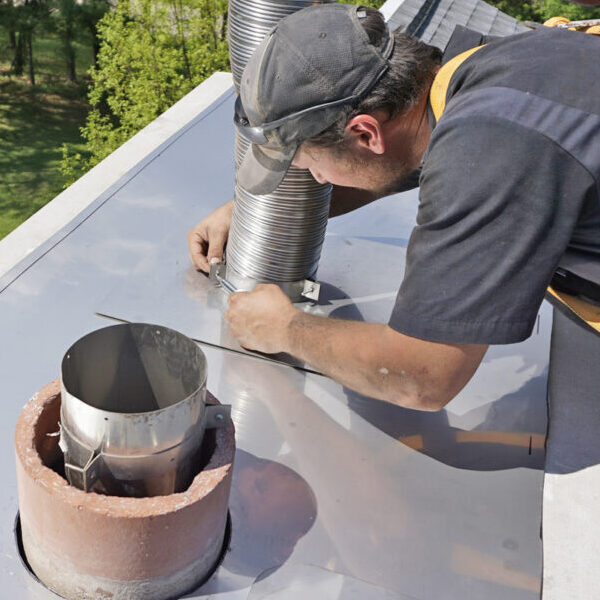How To Seal A Flue Pipe To A Chimney
Higher energy bills and unexplained drafts can be a cause for concern when you don’t know the source. Add probable damage to that equation and you have a potential energy crisis on your hands. What could be causing these issues? We’re going to discuss one possibility today: an issue with your chimney flue seal. Here’s how to seal a flue pipe to a chimney.
 First, what is a flue pipe?
First, what is a flue pipe?
A flue pipe is a tube that extends from your heating source to at least three feet above your roof line. With virtually all wood or gas-burning fireplaces, your flue pipe will be surrounded by brick-and-mortar masonry. Other types of flue pipes, such as those for your furnace or water heater, may lack the masonry component but serve essentially the same purpose.
What is that purpose exactly? A flue pipe helps remove gases and exhaust byproducts from the heating source. Everything from your gas stove to your boiler to the aforementioned furnace and water heater systems need a way to let those byproducts escape.
What materials should be used?
The materials that your Dubuque Fireplace & Patio technician will use for your chimney will vary based on its attached system. There are three main types of those with the corresponding materials listed below:
- Furnaces and water heaters: These will need a galvanized metal flue pipe.
- Fireplaces: Older homes will likely have ceramic flue tiles while newer constructions will have a metal flue pipe; both are surrounded by masonry.
- Plumbing fixtures: Most commonly, your plumbing system will use PVC for its flue pipe though occasionally we’ll run across cast iron options too.
Remember, safety comes first. The purpose of how and why to seal a flue pipe to a chimney is to create a waterproof barrier between it and your home. This will make certain that you don’t get any roof leaks or water damage near the flue itself or in your home.
Flue pipes require a special sealing process
First, your contractor will need to install the flue liner. They’ll start with whatever material is appropriate for the job, whether it’s for your furnace, water heater, fireplace, or your plumbing system. Next, you’ll want to seal the flue liner to the flue opening, typically using a silicon rubber or otherwise inflatable seal. This secures the opening of the flue, but where it meets your roofline needs to be addressed next.
Once again, depending on the material and system, your contractor will follow a slightly different process for sealing along your roofline. Those differences are:
- Furnaces, Water Heaters, and Fireplaces: These will use a combination of aluminum flashing and silicone caulking.
- Plumbing fixtures: Typically, plumbing flue pipes will only require expandable foam or caulking to create the waterproof seal.
 We can handle diagnosing and sealing your flue pipe
We can handle diagnosing and sealing your flue pipe
Working with a professional CSIA-certified fireplace and chimney company can help to ensure your flue pipe is sealed correctly. You want to work with someone both with experience and technical skills to do it the right way.
That’s where our team comes in. When you’re ready to install a flue pipe or need any other type of fireplace or patio assistance, contact Dubuque Fireplace & Patio by calling us at 563-582-5156. You can also send us a message via our contact form.


 (563) 582-5156
(563) 582-5156


